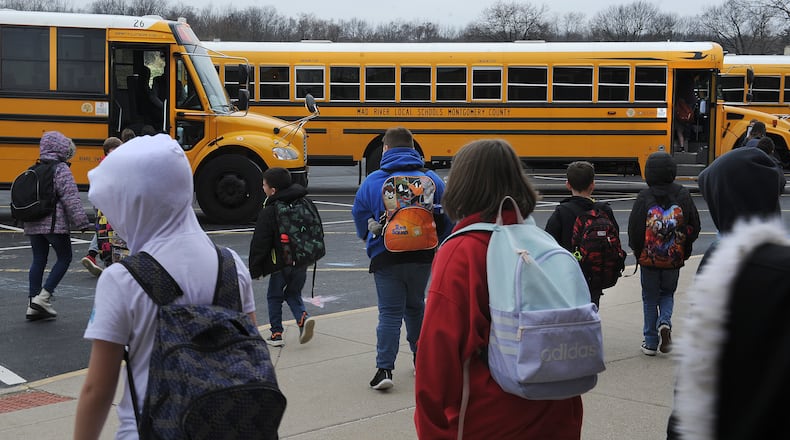This month, Mad River received an overall rating of 3 stars on a 1-5 scale, up from an overall D grade four years ago, Ohio Department of Education records show. Meanwhile, the state gave the district 4 stars for its work in closing learning gaps for a second year in a row, after it received an F in that category in 2019.
Superintendent Chad Wyen said the hybrid in-school system the district used most of the time after the spring of 2020 helped establish a foundation for the higher marks recently released by the state.
“When the majority of districts went remote … our students were in school,” Wyen said. “Even though there were gaps in learning, we reduced those gaps because our students were in-person, in session every other day.
“So, the learning loss — I feel — was a lot less than those that were fully remote,” he added.
After the pandemic hit, it also “gave us a lot of time to truly reflect on our practices,” Wyen said. The district instituted “very specific guideposts, or pacing guides,” for K-8 students in certain subjects, including math.
“That way we ensured there was consistency in implementation for our curriculum and our assessments,” he added.
Most of Mad River’s report card was similar to last year. The district earned 4 stars in gap closing, 3 stars in achievement, and 2 stars in progress, early literacy and graduation. All of those matched 2021-22. The district’s performance index percent dropped a fraction, from 70.6 to 70.0, but was higher than it had been in 2019.
Wyen said the work on closing learning gaps is very significant.
“I do believe that the (overall) three-star rating that says we’ve basically met state standards is a good reflection of where we are right now holistically,” he said. “But at the end of the day we’re looking at individual student growth and that’s the most important piece for us.”
Wyen also pointed to a nearly 8% jump in Mad River’s four-year graduation rate to 88.7%, but said the district saw its largest learning gaps in last year’s seventh- and eighth-graders.
“That’s an obvious area of focus,” he said, noting that Mad River qualified for “high dosage tutoring.” That program is offered by ODE with no direct costs to local districts, according to state records.
“So, we are focusing on targeted students to make sure that we have supports in place for them in order to continue to close those gaps,” Wyen said.
Another focus in recent years has been in its Career Technical Education program at Stebbins High School. Programs in HVAC, criminal justice and teaching have been added “to make sure we are back filling (jobs) within the region,” he said.
Those professions are all in demand, national data shows. HVAC jobs are projected to grow 6% through 2032, according to the U.S. Bureau of Labor Statistics. A Police Executive Research Forum survey released in April showed responding agencies reported nearly 50% more resignations in 2022 than in 2019.
Meanwhile, kindergarten and elementary school teaching jobs are projected to have about 109,000 openings annually through 2032, while the vacancies of high school teaching positions are estimated to be 67,500 each year during that time, according to the U.S. Bureau of Labor Statistics.
About the Author


